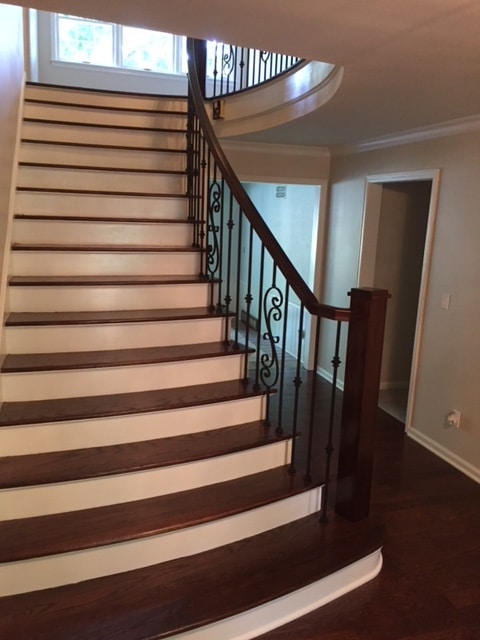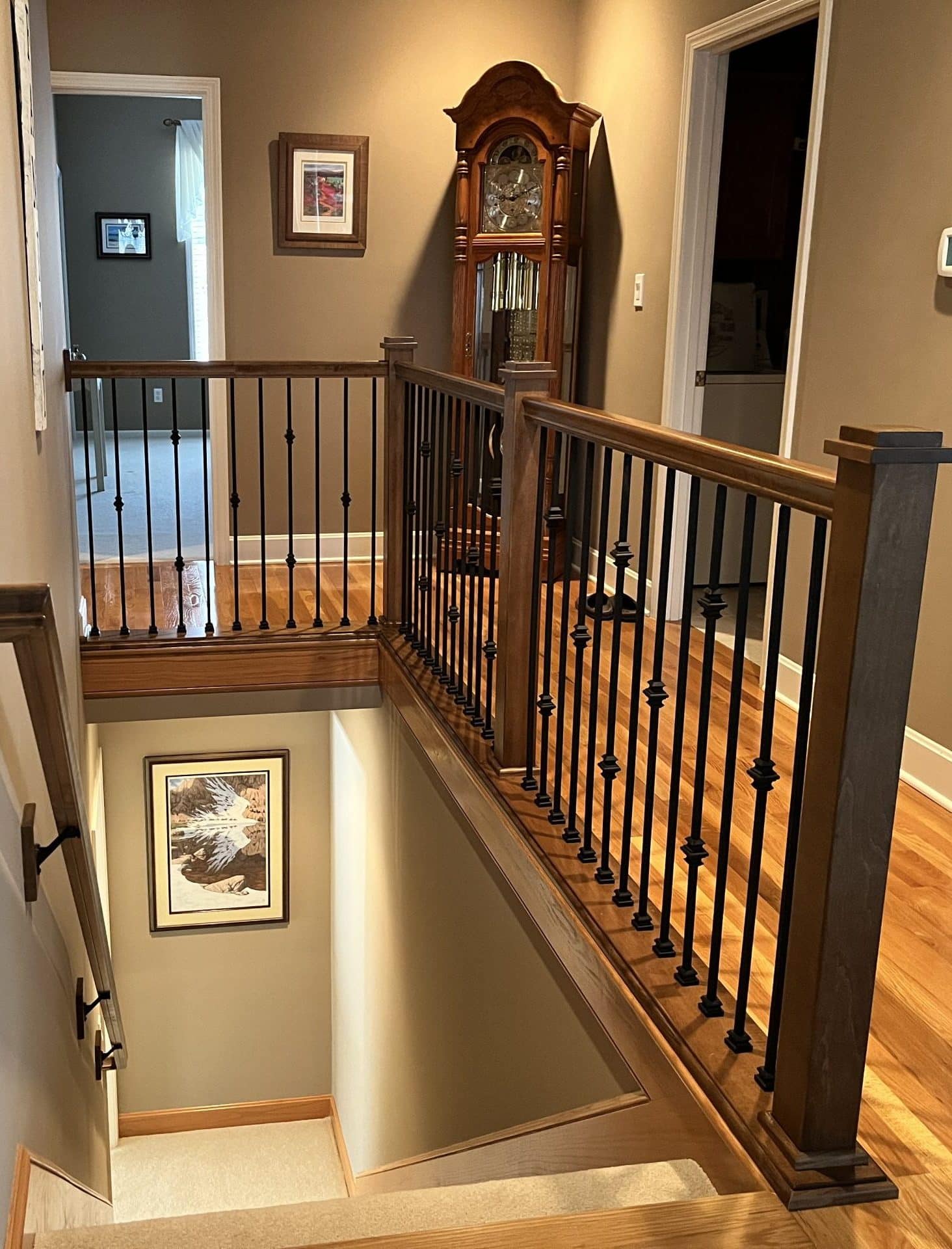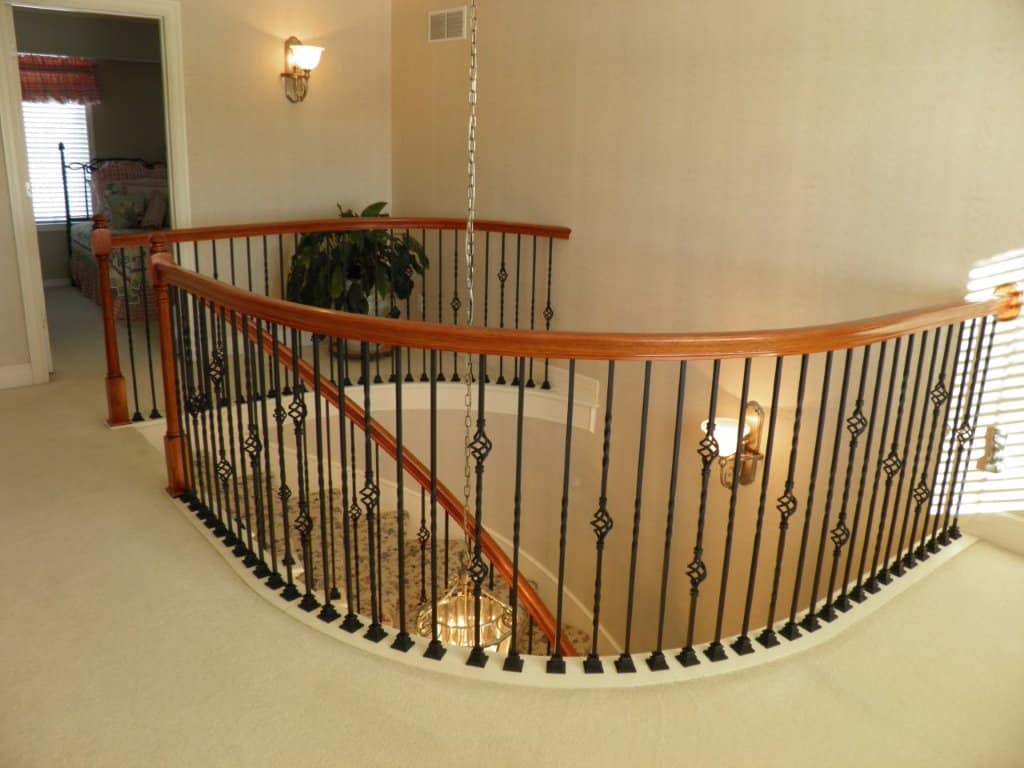
A staircase is often one of the first things you see when you walk into a home, yet it’s frequently overlooked during renovations. Are you ready to turn this functional element into a stunning focal point? A well-designed staircase not only elevates your home’s aesthetic but can also significantly increase its market value.
This guide provides the absolute best staircase renovation ideas to inspire your next project. We will cover everything from initial planning and budgeting to material choices and finishing touches. By the end of this post, you’ll have a clear roadmap to transform your staircase from forgettable to unforgettable.
First Steps: Planning and Budgeting Your Renovation
Before you start tearing out old carpet or picking paint colors, a solid plan is essential for a smooth and successful renovation. Proper planning ensures your project stays on track and within budget.
Assess Your Current Staircase
Start by evaluating the condition of your existing staircase. Is it structurally sound? Do the treads creak? Are the railings wobbly? Identifying any structural issues early on is crucial, as safety should always be your top priority. A simple cosmetic update might be all you need, but if there are underlying problems, they must be addressed first. This assessment will define the scope of your project—from a simple paint job to a full replacement.
Set a Realistic Budget
How much are you prepared to invest in this transformation? Staircase renovation costs can vary dramatically, from a few hundred dollars for a DIY paint and runner project to tens of thousands for a custom-built staircase with premium materials. Research the costs of materials and labor in your area. Remember to include a contingency fund of 10-15% of your total budget to cover any unexpected expenses that may arise.
DIY vs. Hiring a Professional
Deciding between a DIY approach and hiring a professional is a critical decision. If you have strong carpentry skills and experience with home renovations, you might be able to handle tasks like painting, installing a runner, or even replacing treads.
However, for more complex projects involving structural changes, new railings, or premium materials like glass, hiring a professional is the smartest choice. A professional contractor ensures the job is done safely, correctly, and up to code, delivering a high-quality finish that will last for years. Can you really afford to cut corners when it comes to your family’s safety?
Inspiring Staircase Design Ideas 
Now for the exciting part: choosing a design that complements your home’s style. Whether you prefer a sleek, modern look or a classic, traditional feel, there are endless possibilities.
Modern Staircase Designs
Modern designs emphasize clean lines, simplicity, and a minimalist aesthetic.
- Floating Stairs: These create a dramatic, open feel by mounting the treads directly to the wall, making them appear to float. They are perfect for minimalist and contemporary homes.
- Glass Balustrades: Swapping traditional spindles for glass panels creates an illusion of space and light. This is an excellent choice for opening up smaller or darker entryways.
- Monochromatic Palettes: Using a single color, like all-black or all-white, offers a bold and sophisticated statement.
Traditional Staircase Designs
Traditional staircases are timeless, exuding warmth and elegance.
- Classic Wood and White: The combination of stained wood treads and white-painted risers and spindles is a perennially popular choice that suits most home styles.
- Ornate Balusters: Intricately detailed wrought iron or carved wood balusters add a touch of grandeur and character.
- Carpet Runners: A stylish runner not only adds comfort and reduces noise but also introduces color and pattern, making it a powerful design element.
Space-Saving Staircase Solutions
If you’re working with a smaller home or a tight space, clever design is key.
- Spiral Staircases: These are the ultimate space-savers, with a compact footprint that works well in lofts, basements, or tight corners.
- Winder Stairs: Instead of a flat landing, winder stairs use triangular, wedge-shaped steps to turn a corner, making them more compact than traditional L-shaped stairs.
- Integrated Storage: Why not make your staircase work harder? Incorporating drawers or shelves into the risers or under the stairs is a brilliant way to add much-needed storage.
Choosing the Right Materials
The materials you choose will define the look, feel, and durability of your staircase.
Wood
Wood is a classic and versatile choice, offering natural warmth and beauty.
- Oak: Known for its strength and prominent grain, oak is a durable and popular choice that can be stained in various tones.
- Maple: With its fine, subtle grain and light color, maple provides a clean, contemporary look.
- Pine: A more budget-friendly option, pine is a softer wood that can be painted or stained, though it’s more susceptible to dents and scratches.
Metal
Metal brings a modern or industrial edge to staircase design.
- Steel: Often used for stringers and railings in modern designs, steel can be finished in various colors for a sleek look.
- Wrought Iron: Perfect for traditional and formal homes, wrought iron balusters can be crafted into beautiful, ornate patterns.
Glass and Composite Materials
For a truly contemporary feel, consider glass or advanced composites.
- Tempered Glass: Used for railings and even treads, glass maximizes light and creates a sense of openness. It is incredibly strong and safe when properly installed.
- Composite Materials: These engineered materials can mimic the look of wood or stone but often offer greater durability and lower maintenance.
A Step-by-Step Renovation Guide
Ready to get started? Here’s a simplified guide to the renovation process.
- Demolition: Carefully remove the old materials. This could involve tearing out old carpet, unscrewing railings, or prying off old treads and risers.
- Preparation: Prepare the underlying structure. This is the time to make any necessary structural repairs, sand surfaces, and ensure everything is clean and ready for the new installation.
- Installation: Begin installing the new components. Start with the risers, then the treads, and finally the newel posts, handrails, and balusters. Ensure every piece is securely fastened.
- Finishing: Apply your chosen finish. This is where you’ll paint or stain the wood, seal the surfaces, and add any final decorative touches. Allow adequate drying time between coats for the best possible result.
Illuminate and Decorate
The final touches can make all the difference. Lighting and decor are what truly bring your new staircase to life.
Integrating Lighting
Proper lighting is essential for both safety and aesthetics.
- Step Lights: Small lights installed directly into the wall or risers illuminate the treads, preventing trips and falls while adding a soft, ambient glow.
- Pendant Lights: A dramatic pendant light or chandelier hanging in a double-height stairwell creates a stunning focal point.
- Wall Sconces: Placed along the staircase wall, sconces provide even illumination and can complement your home’s decor style.
Decorating the Staircase
Personalize your staircase and the surrounding area to reflect your style.
- Gallery Wall: The wall along the staircase is the perfect canvas for a gallery of family photos or favorite art pieces.
- Plants: Add a touch of green with a tall plant at the base of the stairs or smaller potted plants on a landing.
- Runners: As mentioned, a beautiful carpet runner adds texture, color, and comfort underfoot.
Begin Your Staircase Makeover
Renovating your staircase is one of the most impactful projects you can undertake to enhance your home’s beauty and value. By carefully planning your budget, choosing a design that reflects your style, and selecting the right materials, you can create a feature that you’ll admire for years to come.
What are you waiting for? It’s time to stop overlooking your staircase and start planning a renovation that will completely transform your home.


